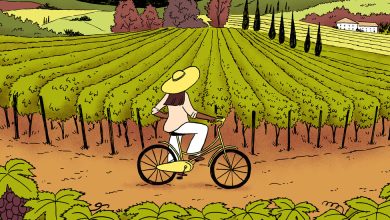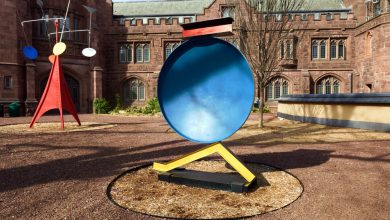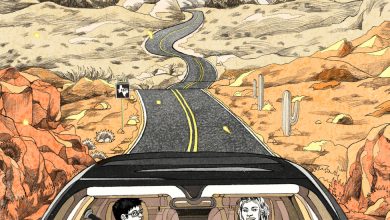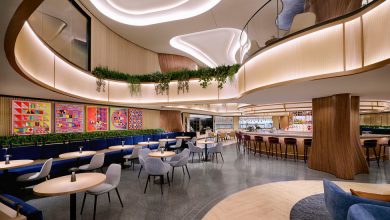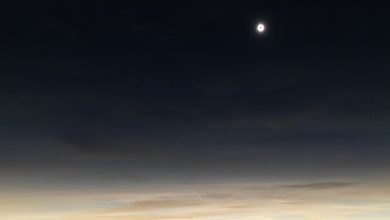Setting Sail on the Winding Waterways of California’s Delta

The wind was a perfect 20 knots, the warm breeze filling our sails, as we angled westward, riding the current down the Sacramento River. We sailed past Sherman Island, slowly cruising through a group of kiteboarders and windsurfers who flew by our hull throwing peace signs. The Montezuma Hills rolled leisurely to the west, dotted with a mass of languorous windmills while tule reeds, permanently slanting eastward, shuddered as a flight of swallows rose in unison.
Tacking east, rounding the southern bend of Decker Island, we passed the rusted remains of a pair of barges, the sloping decks covered with scrubby brush, before dropping anchor near a sprawling oak tree. As the sun dipped low in the sky, a herd of cattle meandered down to the water, shooting skeptical looks our way as we jumped off the bow for a swim.
It was May 2021, and my husband, Alex, and I were aboard Saltbreaker, the 32-foot, 1979 Valiant sailboat he purchased with his brother 10 years ago. After months of enduring the upheaval, grief and anxiety of the pandemic, Alex and I wanted to get out, get some sun — a rarity in the fog-muffled summer months at our house in the western reaches of San Francisco — and explore the weird, winding waterways of the Sacramento-San Joaquin Delta. This weeklong boat trip would be the first of a half-dozen visits we would make to the area in recent months.
The Delta, as it’s more commonly known, is an intricate and sprawling 1,250-square mile system of water and farmland, centered around the convergence of the Sacramento and San Joaquin Rivers. Originally a vast marshland populated by many bird and fish species and navigated by Indigenous peoples, the Delta was, like most things in California, drastically altered. Starting in the mid-19th century, in response to the Swamp Lands Act of 1850, the Gold Rush and California’s ballooning population, the marsh was dredged, dried and plowed, exposing fertile peat soil; the waters were held back with levees in one of the largest land reclamation projects undertaken in the United States.
Countless narrow, winding waterways — capillaries spider-webbing through the marsh from the arterial rivers — were carved into straight lines to better serve the transport hubs of San Francisco, Sacramento and Stockton. The rivers themselves were dredged of debris from mining in the Sierra Nevada, creating shipping channels, and towns began springing up on the newly fortified banks. As we sailed these waterways a century and a half later, our constant refrain was the sheer unlikeliness of the landscape. It should be impossible that we, on our boat, were so high above the farmland on either side. Thanks to those estuary-altering levees, that was often the case, allowing us to peer down at land tens of feet below the water.
Absolutely unrecognizable from its original form, the Deltaremains a deeply connected interplay between land and water. A windblown world of green, blue and gold, the landscape is dominated by narrow sloughs, its network of waterways winding past farmland and riverside towns linked by bridges. Often, the most direct path from one place to another is over water. The Delta is still home to more than 750 native species, the largest stop for migrating birds on the Pacific flyway and a major agricultural hub, with asparagus, pears, almonds, wine grapes and livestock all benefiting from its fertile soil. It’s also a four-season destination for wind sports, boating and fishing and home to communities that, despite being just an hour from San Francisco, are utterly distinct from the Bay Area.
A levee-carved landscape, a vital water source
Water in California has long been a fraught topic, one that grows more contentious with rising temperatures and worsening droughts. The Delta is a major source of water for approximately two-thirds of the state, according to the state’s Department of Water Resources, and fed by freshwater flowing from the Sierra. But the Delta is also subject to the salty tidal system of San Francisco Bay, and must contend with a future of a shrinking snowpack and rising sea levels — both of which threaten to throw off the system’s freshwater composition while increasing the risk of extreme flooding. A combination of habitat loss, changes in water quality and the flow regimes of dams upriver have also affected native species, like the nearly extinct Delta smelt fish.
The levee-carved landscape is in an increasingly tenuous position, as the years have passed and water levels have risen. Levees have been built higher. Many man-made islands are now as much as 25 feet below the water level because of both increased levee size and topsoil loss. The levee infrastructure itself is in need of updating, as the system is increasingly at risk from flooding, general deterioration and earthquakes.
Recent proposals for managing these issues and maintaining California’s need for water include constructing a tunnel, known as the Delta Conveyance Project, to more efficiently and directly pump fresh water to the rest of the state. The project falls under the purview of the Department of Water Resources’ State Water Project, just one of many entities, including local municipalities and the federal government, that hold water rights in the area.
The Conveyance Project is now under a process of environmental review, but as the future of the region, and the state’s water future, hang in the balance, as many as 200 interest groups are invested in and vocal about it. (Most local businesses in the area that I passed displayed signage imploring the government to “STOP THE TUNNELS, SAVE OUR DELTA!”) These environmental nonprofits, industrial agriculture companies, local communities and other groups are clambering to save their particular vision of what the Delta should be: a water source, a protected ecosystem, an accessible recreational destination, a collection of communities or some combination of them all. The Delta Stewardship Council, a state agency, was created to formulate a long-range management plan and take the needs of these competing interests into account.
“Figuring out how to respond to climate change is not unique to the Delta, but it’s probably more complicated here because we have such diverse interests,” said Harriet Ross, the council’s assistant planning director.
‘70 years and 70 miles away from San Francisco’
A comment on the Delta that isn’t up for debate: It’s a hidden gem, for everyone. We spent our first week sailing down rivers and up sloughs, passing under bridges, tacking back and forth upwind on the San Joaquin River, pulling our dinghy up to Moore’s Riverboat for cold beers and burgers and tying up to the gas dock at Korth’s Pirate Lair Marina, where hundreds of egrets and cranes dotted the branches in a nearby stand of trees.
Jet Skis and speedboats, often towing wakeboarders and tubers, were common sights, as were massive, skyscraper-size tankers, cruising in and out of Stockton. When partially obscured by the tule reeds, it looked like they were gliding overland.
This was unlike any sailing that we, or Saltbreaker, had ever done. During ocean crossings, the boat tended to be in constant, bucking motion thanks to rolling ocean swell. Sailing in the San Francisco Bay provides its fair share of salt spray and wind-whipped whitecaps. Here, the water was largely flat, the warm winds were inconsistent, and the air was heavy with the smell of rich, peaty earth. While we were far from the only sailboat around, we were largely outnumbered by Jet Skis and speedboats with beefy outboard engines — navigating narrow channels in strong currents while avoiding shallow patches is not easy on a wind-powered keel boat.
In May, weeks after our second vaccine shots, “the Delta” had no worrisome second meaning, and we were thrilled with the chance to explore on land as well. Mooring our boat to visit towns in the Delta, from Rio Vista and Isleton in the south-central portion to Walnut Grove and Locke up north, felt nothing so much like time travel thanks to historic main streets, neon-sign-bedecked bars and, one day, a fleet of 1960s Thunderbirds cruising the winding levee roads.
“I always tell my customers that Isleton is 70 years and 70 miles away from San Francisco,” said Iva Walton, owner of the Mei Wah Beer Room, a craft beer bar in Isleton housed in a former Chinese gambling den.
The Delta’s communities have long been diverse, with people of Portuguese, Hispanic and Asian backgrounds drawn to the area first by the Gold Rush, and later by agriculture. In the tiny town of Locke, where wooden buildings constructed in the early 20th century remain standing, if slightly slanted, we drank beers at Al the Wops (yes, its actual name — it also goes by Al’s Place), a tavern opened in 1934 with dollar bills papering the ceiling and leather-clad bikers lining the bar. Four doors down, we got a history lesson from Martha Esch, a longtime Delta resident and owner of the Lockeport Grill & Fountain, a former antique shop turned vintage soda fountain with six rooms for rent above.
Other joys included ice-cold martinis at Tony’s Place in Walnut Grove and loaded breakfast sandwiches at the bar at Wimpy’s Marina. We weren’t the only ones relishing the local scene, as the pandemic seemed to boost tourism in the Delta. Anecdotally, some tourism operators noted bumps in business, and the VisitCADelta.com tourism website saw more than a 100-percent increase in users between the first and second quarters of 2021 (the site saw a 50-percent increase from 2020), according to Erik Vink, executive director of the Delta Protection Commission.The constantly blowing Delta breeze couldn’t have hurt, when airflow is top of mind.
Meredith Robert, general manager of Delta Windsports, a Sherman Island-based company that rents and sells windsurfing and kiteboarding gear, said that business was booming, even in the depths of the pandemic.
“Due to Sherman Island County Park rules, we weren’t able to offer lessons for a while, which was frustrating. It doesn’t really fulfill us to sell 20 $500 boards,” she said. “But we were really busy, which was great.”
Masks were few and far between in the majority of establishments we visited, indoor or outdoor. This felt like an illicit thrill back in May and June; when we returned in July, California’s coronavirus cases were on the rise and it felt more complicated. As we sipped Bloody Marys at Wimpy’s, a fellow patron loudly railed against possible mask mandates as he ordered a scotch and soda in a pint glass. When I spoke to Ms. Walton of Mei Wah in August about her business, she didn’t hesitate to share anti-lockdown, anti-vaccine views (it’s worth noting that Mei Wah does have an outdoor beer garden).
An uncertain future
After the past year and a half of uncertainty, the one guarantee is that things keep changing. So when it comes to the pandemic, to travel and, yes, to the Delta, perhaps the best way forward is to have a continually moving target. Because while it is a singular place in terms of its beauty, character and sheer importance to California’s interests, the Delta is also, like so many things in the West, a bellwether for the choices people have to make, as climate change threats increase in the form of rising sea levels, destructive tropical storms or climbing temperatures. And the Delta, like everywhere in California, is increasingly at risk from devastating fires and terrible air quality.
Dr. Peter Moyle, a professor emeritus at the University of California, Davis’s Department of Wildlife, Fish and Conservation Biology, has been studying the Delta for decades. Dr. Moyle has focused his research on the endangered Delta smelt and other fish of the Suisun Marsh, an area which, he said, “most resembles the original Delta.” He has no doubt that, whatever the path forward, major change is a given.
“The Delta is a very different system than it was 150 years ago, even 50 years ago. It’s going to keep changing,” he said. “What we’re living with now is a temporary condition, and people need to figure out what they really want the system to look like.”
There are infinite possibilities of what it could look like, from attempts to maintain the status quo as much as possible to a kind of eco-reclamation of open waterways and marshland. Everyone wants to save the Delta, but what version of the Delta deserves to be saved? And who does that Delta best serve?
Sailing into the Delta is a downwind dream; sailing out is an upwind slog. For the summer, we rented a slip in the Owl Harbor Marina on Twitchell Island (which, according to Dr. Moyle, may well be underwater in the coming decades). On a blazingly hot Friday evening in July, after we drove up for a weekend on the water, we sat in the boat’s cockpit as the sun set and the wind picked up, the sky glowing orange; it had been 110 degrees that day and promised to be even hotter the next. We watched a pair of swallows fret over our proximity to their nest, constructed precariously below one of our boat’s solar panels. The birds seemed to be arguing about the best way to proceed.
“What a dangerous place for a nest,” we thought, discussing the likelihood that their eggs would hatch before we sailed away, hoping that they would make it in spite of their questionable choice of a home.
When we came back a couple of weeks later, the temperature had dropped, the nest was empty and the swallows were gone. We carefully navigated out the narrow channel, avoiding shallow patches and sea grass, passing long-abandoned, half-sunk boats surrounded by invasive water hyacinth and then, so were we.
Follow New York Times Travel on Instagram, Twitter and Facebook. And sign up for our weekly Travel Dispatch newsletter to receive expert tips on traveling smarter and inspiration for your next vacation. Dreaming up a future getaway or just armchair traveling? Check out our 52 Places list for 2021.
